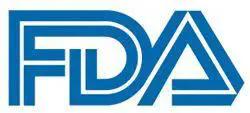News
Article
FDA Grants Accelerated Approval to Selpercatinib for Pediatric RET+ Metastatic Thyroid Cancer or Solid Tumors
Author(s):
The FDA has granted accelerated approval to selpercatinib for pediatric patients with select RET-altered metastatic thyroid cancers or solid tumors.
FDA

The FDA has granted accelerated approval to selpercatinib (Retevmo) for pediatric patients aged 2 years or older who have advanced or metastatic medullary thyroid cancer and a RET mutation who require systemic therapy; advanced or metastatic thyroid cancer with a RET gene fusion who require systemic therapy and who are radioactive iodine refractory, if radioactive iodine is appropriate; and locally advanced or metastatic solid tumors with a RET gene fusion that have progressed on or after prior systemic treatment or who have no satisfactory alternative options.1,2
The efficacy of the agent was evaluated in pediatric and young adults as part of the phase 1/2 LIBRETTO-121 study (NCT03899792). Data indicated that selpercatinib elicited a confirmed overall response rate (ORR) of 48% (95% CI, 28%-69%) by blinded independent review committee and RECIST 1.1 criteria, with a median duration of response that was not yet reached (95% CI, not evaluable [NE]-NE).
In the subset of patients with RET-mutated medullary thyroid cancer (n = 14), the ORR was 43% (95% CI, 18%-71%), which comprised a complete response (CR) rate of 7% and a partial response (PR) rate of 36%. The median duration of response (DOR) in this group was not yet reached (NR; 95% CI, not evaluable [NE]-NE). All responders experienced a DOR that lasted for at least 12 months; 67% experienced a DOR that lasted for 18 months or longer.
Moreover, in the subset of patients with RET fusion–positive thyroid cancer (n = 10), the ORR was 60% (95% CI, 26%-88%), which included CR and PR rates of 30% and 30%, respectively. The median DOR in this group was also NR (95% CI, NE-NE). Here, 83% of patients experienced a DOR of at least 12 months and 50% experienced a DOR of at least 18 months.
About LIBRETTO-121: Eligibility, Treatment, Objectives
The open-label, multicohort, multicenter trial enrolled pediatric and young adult patients with advanced or metastatic solid or primary central nervous system (CNS) tumors who have experienced failure with standard therapies.3 To enroll, patients needed to have an activating RET gene alteration in the tumor and/or blood, a Karnofsky or Lansky performance score of at least 50, and acceptable hematologic, hepatic, and renal function.
Patients could not have undergone surgery within 2 weeks of initiating treatment with selpercatinib nor could they have clinically significant, uncontrolled cardiac, cardiovascular disease, or a history of myocardial infarction within 6 months before beginning study treatment. If they had active systemic bacterial, viral, fungal, or parasitic infection that was uncontrolled, they were excluded. Patients also could not have uncontrolled symptomatic hyperthyroidism, hypothyroidism, hypercalcemia, or hypocalcemia.
Study participants were administered 92 mg/m2 of oral selpercatinib twice daily. Treatment continued until disease progression, intolerable toxicity, or other criteria for discontinuation were met.
For the phase 1 portion of the research, investigators sought to determine the safety of selpercatinib in terms of dose-limiting toxicities in pediatric patients with advanced solid tumors and pediatric patients with primary CNS tumors. For phase 2, primary objectives included examining ORR by IRC and RECIST 1.1 criteria and ORR by IRC and RANO criteria.
Baseline Characteristics
In the RET-mutated medullary thyroid cancer subgroup, the median age was 14 years (range, 2-20). Most patients were male (64%), White (71%), and had metastatic disease (71%). Forty-three percent of patients had measurable disease at baseline. Moreover, 21% of patients had prior exposure to systemic treatment.
In the group of patients with RET fusion–positive thyroid cancer, the median age was 13.5 years (range, 12-20). More than half of patients were male (60%) and half were Asian. All patients had metastatic disease and papillary thyroid cancer histology; 40% had measurable disease at baseline. Additionally, 30% of these patients previously received systemic therapy.
Safety Data
The safety of selpercatinib was evaluated in 27 patients with advanced solid tumors harboring an activating RET alteration who were enrolled in the trial. Eighty-one percent of these patients were exposed to the agent for at least 6 months and 59% were exposed for longer than 1 year.
Twenty-two percent of patients experienced serious adverse effects (AEs), which included abdominal infection and pain, aspiration, constipation, diarrhea, epiphysiolysis, nausea, pneumonia, pneumatosis intestinalis, rhinovirus infection, sepsis, and vomiting. Moreover, 22% and 15% of patients experienced AEs that required dose interruptions or reductions, respectively.
The most common AEs experienced by at least 15% of patients who received the agent on the trial included hypothyroidism (grade 1-4, 19%; grade 3-4, 0%), diarrhea (41%; 0%), nausea (30%; 3.7%), vomiting (30%; 7%), abdominal pain (26%; 0%), constipation (19%; 7%), stomatitis (15%; 0%), fatigue (26%; 0%), pyrexia (26%; 0%), edema (19%; 0%), increased weight (19%; 7%), headache (33%; 0%), rash (19%; 0%), musculoskeletal pain (56%; 0%), COVID-19 (30%; 0%), upper respiratory tract infection (22%; 0%), oropharyngeal pain (22%; 0%), cough (22%; 0%), hemorrhage (26%; 3.7%), and proteinuria (15%; 0%).
The most common laboratory abnormalities that worsened from baseline in at least 15% of patients included decreased calcium (grades 1-4, 59%; grade 3-4, 7%), increased alanine aminotransferase (56%; 3.7%), increased alkaline phosphatase (52%; 0%), increased aspartate aminotransferase (48%; 3.7%), decreased albumin (44%; 0%), increased bilirubin (30%; 0%), increased creatinine (22%; 0%), decreased potassium (22%; 3.7%), decreased magnesium (15%; 3.7%), decreased neutrophils (44%; 7%), decreased lymphocytes (24%; 4.8%), decreased platelets (22%; 0%), and decreased hemoglobin (19%; 7%).
References
- FDA grants accelerated approval to selpercatinib for pediatric patients two years and older with RET-altered metastatic thyroid cancer or solid tumors. FDA. May 29, 2024. Accessed May 29, 2024. https://www.fda.gov/drugs/resources-information-approved-drugs/fda-grants-accelerated-approval-selpercatinib-pediatric-patients-two-years-and-older-ret-altered
- Retevmo. Prescribing information. Eli Lilly and Company; 2024. Accessed May 29, 2024. https://www.accessdata.fda.gov/drugsatfda_docs/label/2024/213246s012lbl.pdf
- A study of oral LOXO-292 (selpercatinib) in pediatric participants with advanced solid or primary central nervous system (CNS) tumors (LIBRETTO-121). ClinicalTrials.gov. Updated March 7, 2024. Accessed May 29, 2024. https://clinicaltrials.gov/study/NCT03899792









